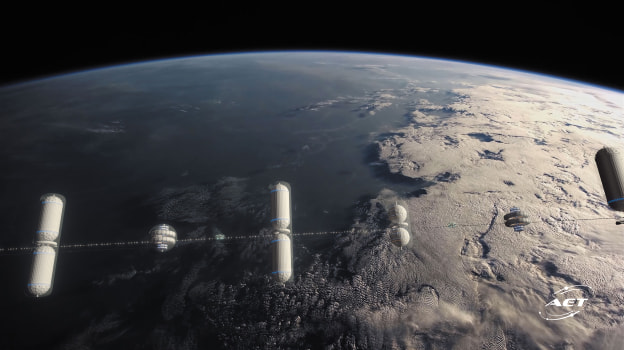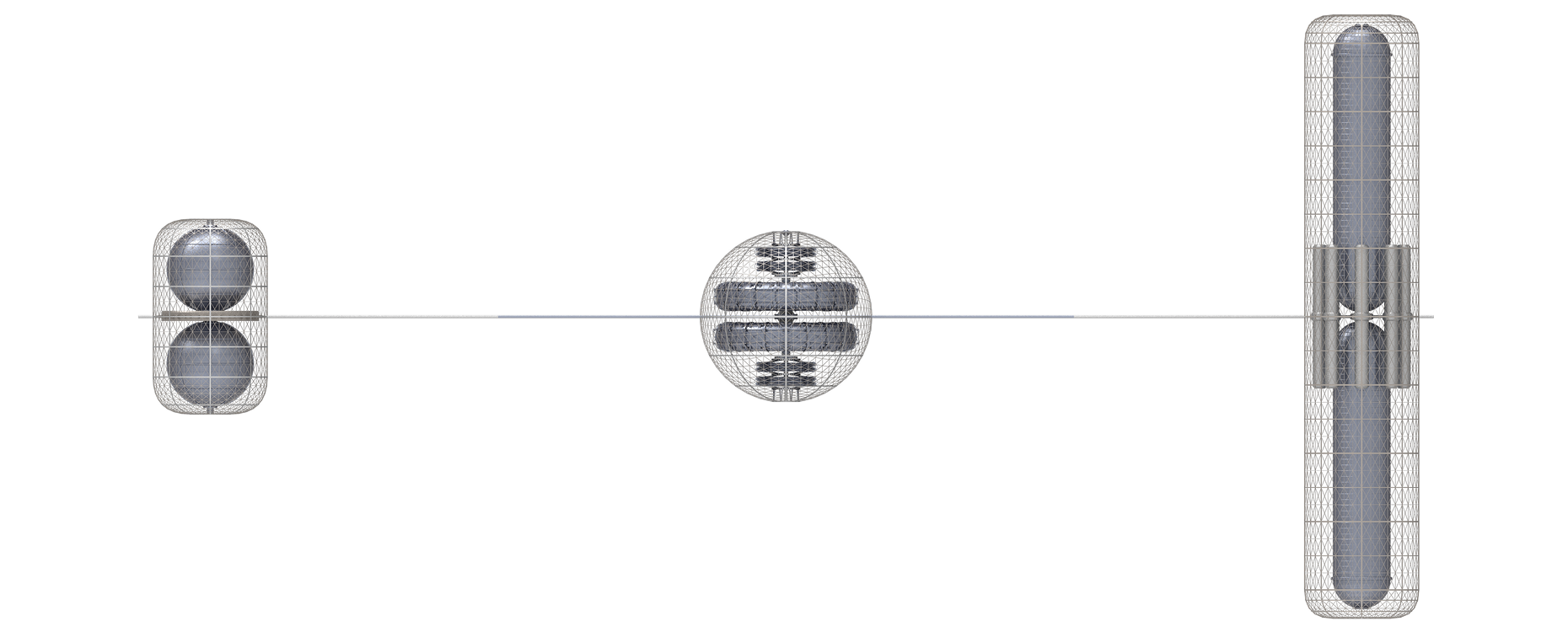Gondolas, factories, residential complexes: future on the orbit
The ISN “Orbit” will look like a necklace where there will be coupled cargo and passenger gondolas placed at a span of about 500 m and connected to each other in the form of a ring with string communications. There will be factories, workshops, power plants, and other industrial structures eventually created around the gondolas. Residential space settlements —EcoCosmoHouses, where service personnel of space industry will live and work, will be also located there



